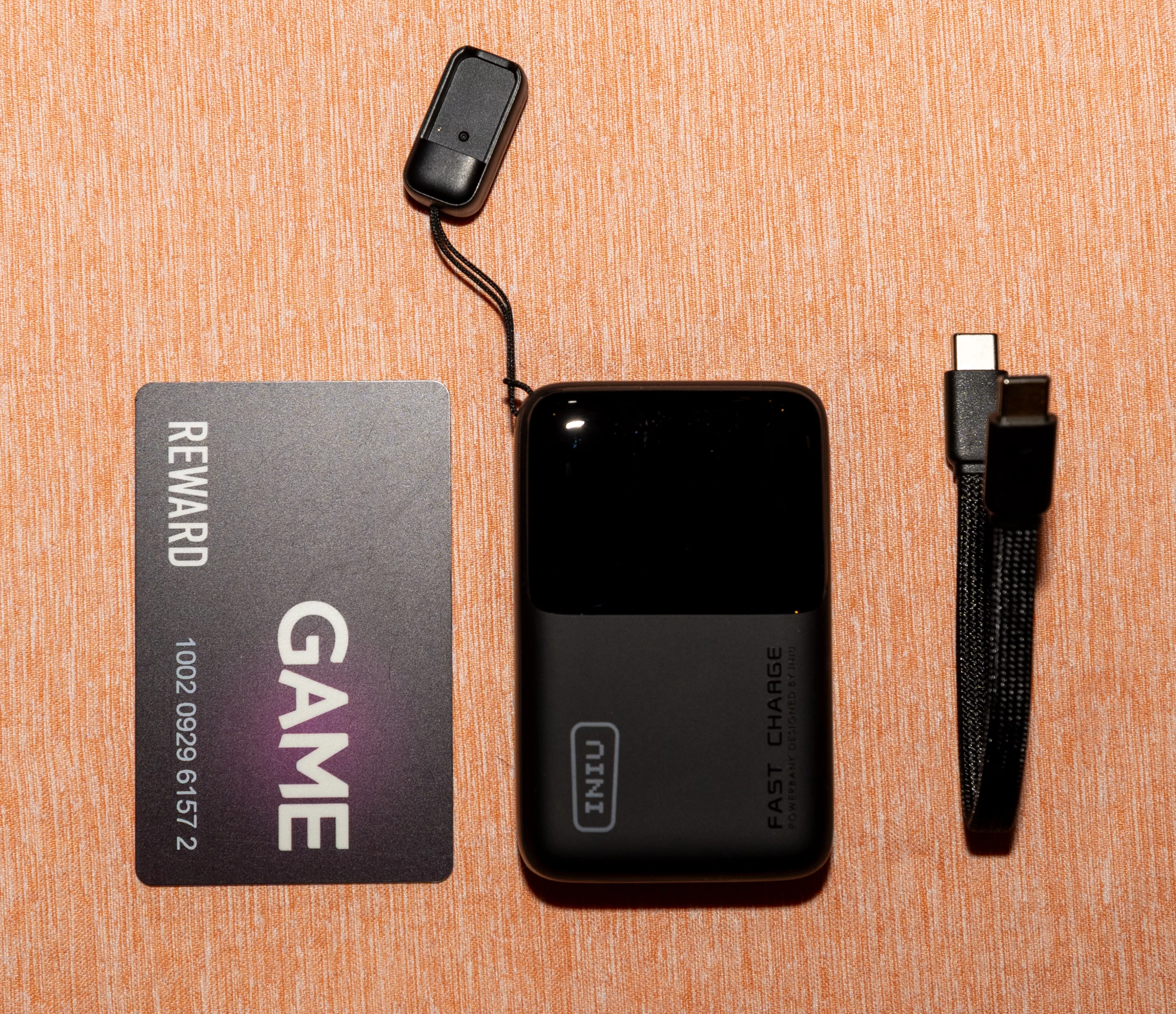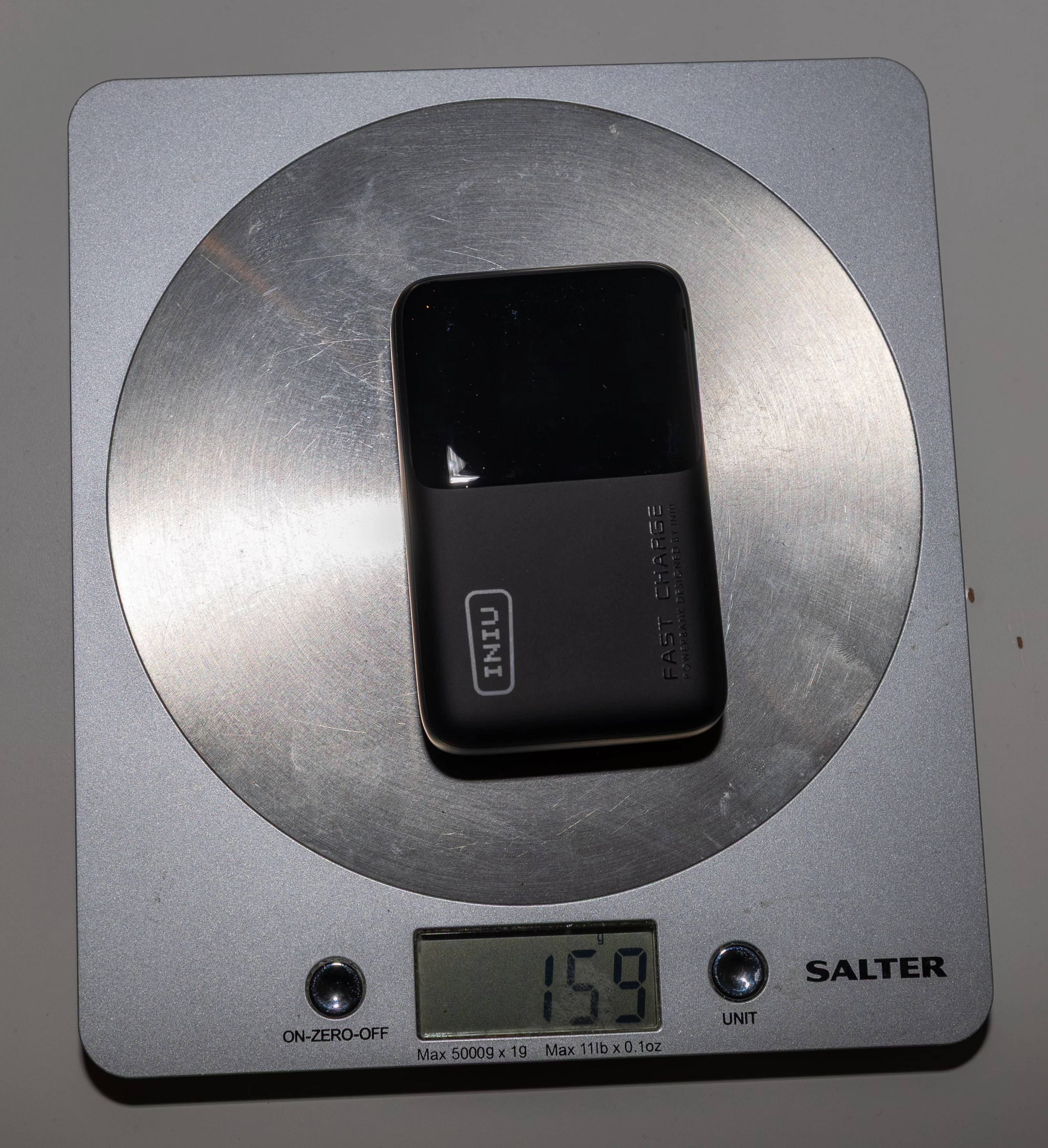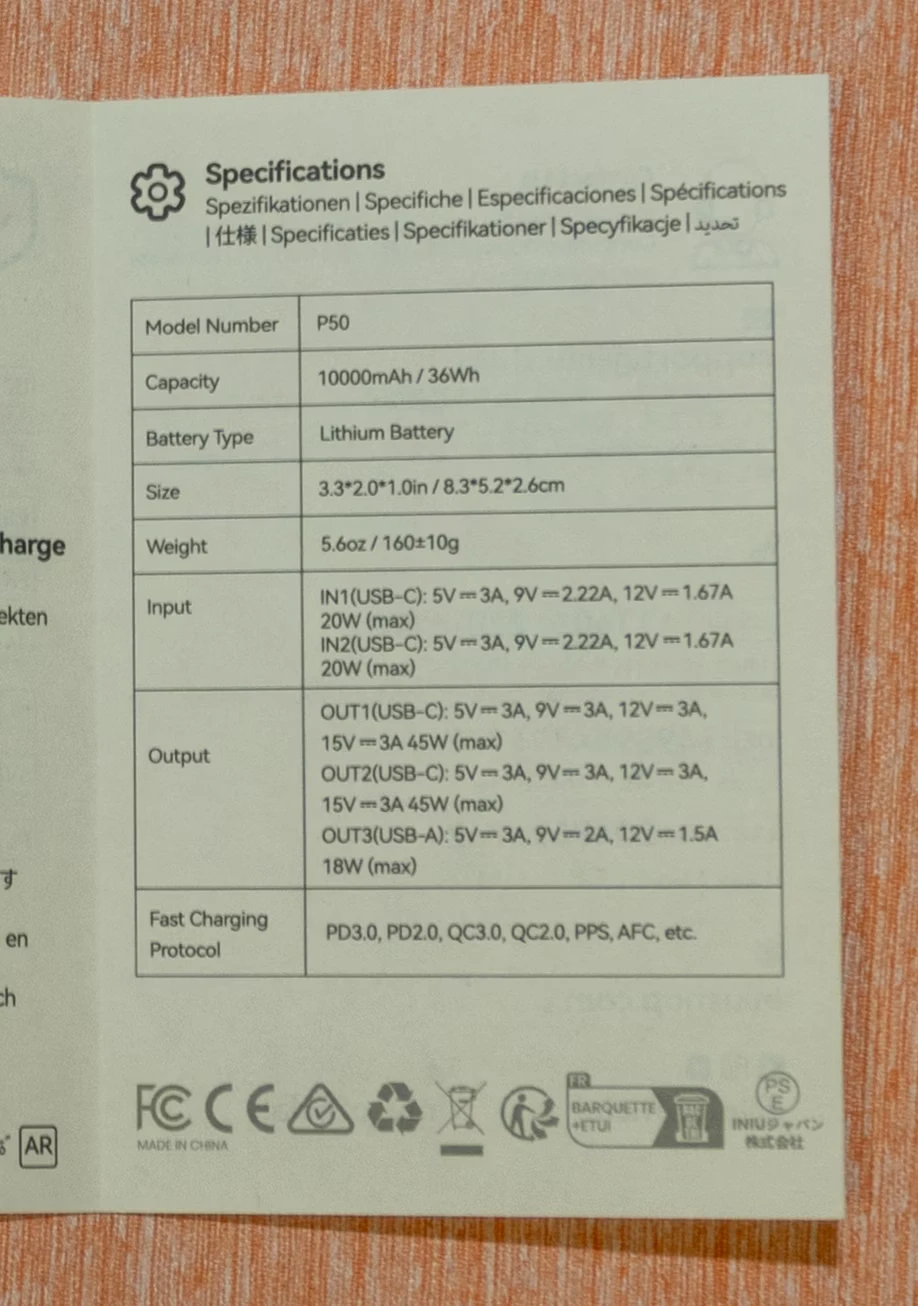Seeking a lightweight power bank: The INIU P50-E1
• 4 min read
I currently have a Pixel 8 smartphone. And even though it has better battery life than my previous phone, if I’m out and about all day it’ll run out of charge.
So I’ve got into the habit of carrying around a power bank with me. I also don’t want to carry around a lot of weight unnecessarily, so most recently I’ve been using an Anker Nano 5000 mAh (A1653). It fits the lightweight criterion, weighing only 98g. However, its other characteristics have left me unsatisfied – it runs out of power quickly and gets hot while charging my phone.
I recently discovered (via Reddit) that there are some ultralight 10,000 mAh power banks, such as the Nitecore NB10000 GEN 3 (weighing around 150g) or the KLARUS K5 (weighing 157g). But these models aren’t the cheapest – the Nitecore NB10000 GEN 3 costs £68.95, while the KLARUS K5 costs £47.95. So I didn’t rush out to buy any of those models.
Another model came up recently though – the INIU P50-E1. This one is another 10,000 mAh model, that weighs 160g and measures 83×52×26mm according to the official specs. It can also charge at 45W, which is higher than the other models mentioned (which top out at 22.5W). And there was a double-discount deal going (whether this was intentional or an accident, I don’t know) on Amazon UK, making the power bank only £12.81. So I bought one.
I don’t frequently write posts about products, but there’s little third-party info about this model online, and so putting some out there might help someone.
In the box, you get:
- the unit
- a cable holder attachment for the top-left corner
- a 17.5cm USB-C cable
- a manual and some Amazon transparency card thing
In photo form:
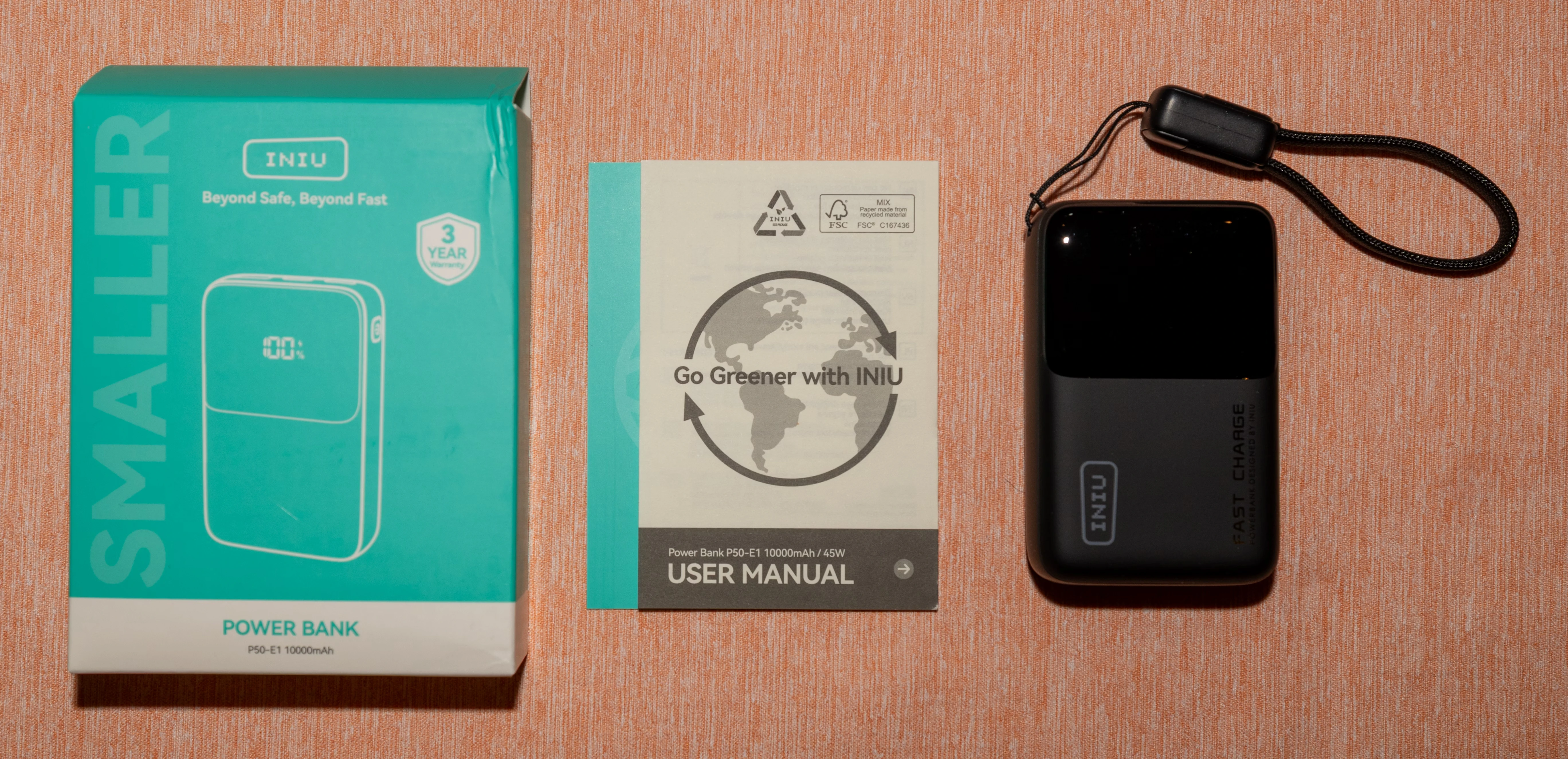
The USB-C cable is flat and sleeved. The cable holder accessory is attached via a string loop and is easily removed if you don’t want it.
The display shows the current battery level as a percentage:
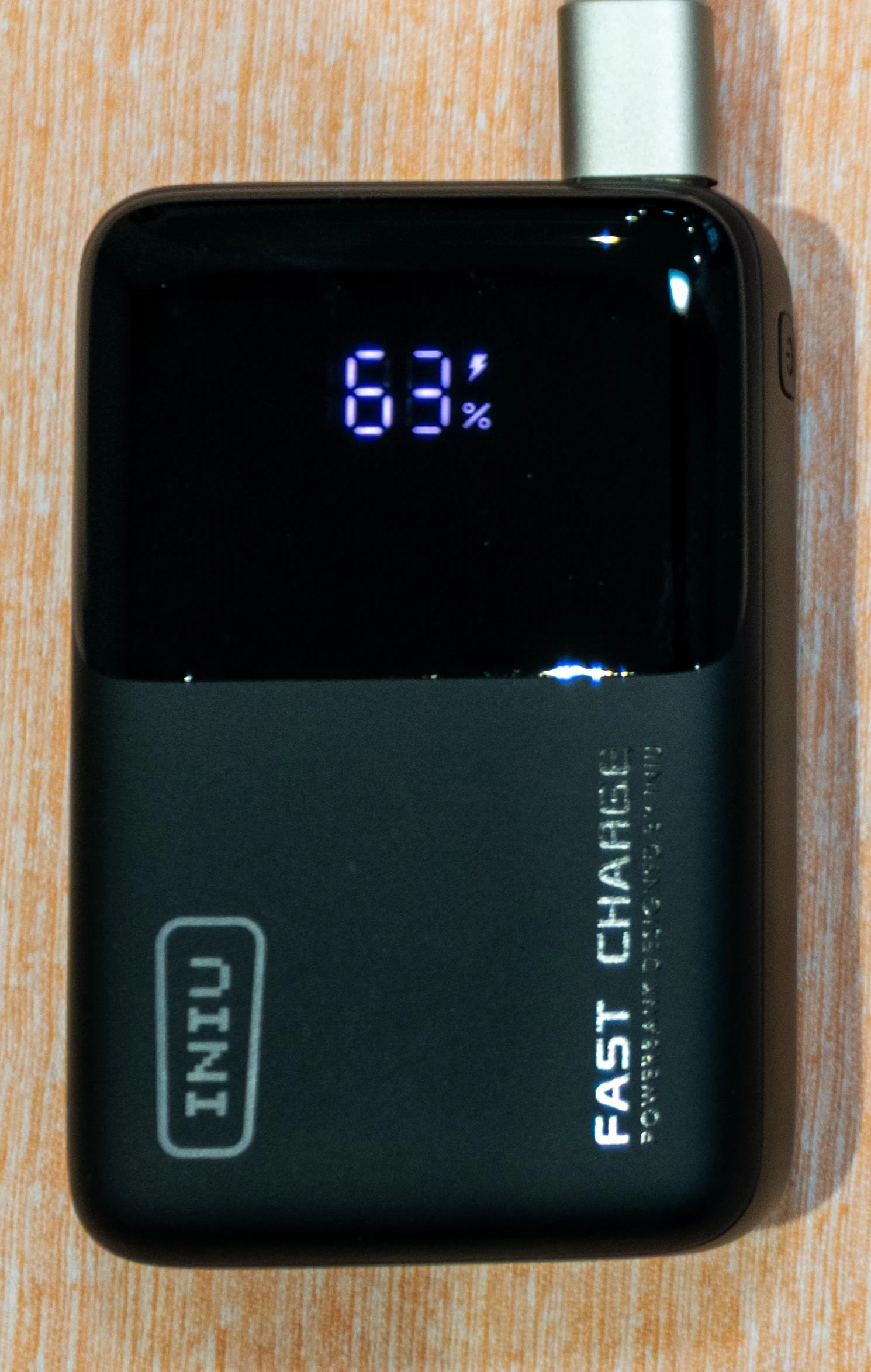
That display turns on when the power bank is being charged, and when the power bank is charging another device. Pressing the power button on the right-hand side of the unit also turns the display on temporarily.
While the power bank is being charged, the last digit on the display flashes.
I suspect the display will get scratched pretty easily, so I’ll probably find a soft pouch or similar to put the power bank in.
Specs
The unit is small and chunky, and weighed 159g on my kitchen scales:
With the cable and cable holder, it weighed 166g.
The manual and the back of the unit contain some more detailed specs (which I haven’t seen published online):
Here’s the two combined in table form:
| Battery capacity | 36 Wh (10,000 mAh @ 3.6V) |
| Output capacity | 31.5 Wh (6200 mAh @ 5V) |
| Dimensions | 83×52×26mm |
| Weight | 160±10g |
| Input – USB-C 1 and USB-C 2 | 5V ⎓ 3A 9V ⎓ 2.22A 12V ⎓ 1.67A (20W max) |
| Output – USB-C 1 and USB-C 2 | 5V ⎓ 3A 9V ⎓ 3A 12V ⎓ 3A 15V ⎓ 3A (45W max) |
| Output – USB-A | 5V ⎓ 3A 9V ⎓ 2A 12V ⎓ 1.5A (18W max) |
| Fast charging protocols | PD 3.0, PD 2.0, QC 3.0, QC 2.0, PPS, AFC etc. |
Note that those specs don’t provide information on performance when charging multiple devices at once, or how long the maximums are sustained for.
For capacity, note that the milliampere-hours (mAh) figures for the battery capacity and output capacity are given at different voltages. Comparing the watt-hours figures is more useful here, and 31.5 ÷ 36 gives an 87.5% output efficiency at 5 volts.
Performance
There’s a German Reddit post with some performance measurements, where the output capacity was measured at around 32 Wh.
I don’t currently have a USB power meter to do similar measurements myself. As a real-world test though, the unit charged my Pixel 8 from 20% to 80% in almost exactly an hour (with the 80% charging limit turned on on the Pixel 8). That might seem a bit slow, but it seems in line with what I get from a mains charger. (So the phone is probably the limiting factor here – it could be throttling due to heat.)
During that same test, the power bank battery level drained from 100% to 62%. (For some reason, the battery percentage on the power bank dropped from 100% to 91% fairly quickly, and lowered much more slowly after that.)
I haven’t noticed any real heat from the power bank itself while it’s charging my Pixel 8 (unlike the Anker Nano 5000 mAh, which gets more than warm).
Another aspect of performance is how long it takes to charge the power bank. Out of the box, the battery level of the power bank was at 51% and it took pretty much exactly an hour to charge to 100% (using a Google 45W USB-C charger). That’s in line with the two-hour figure published online.
If I get a USB power meter, I may update this post with some more precise measurements or graphs.
Wrapping up
My first impressions are that power bank seems to be what I was looking for. It remains to be seen how it fares in the longer term, though.
Buy me a coffee